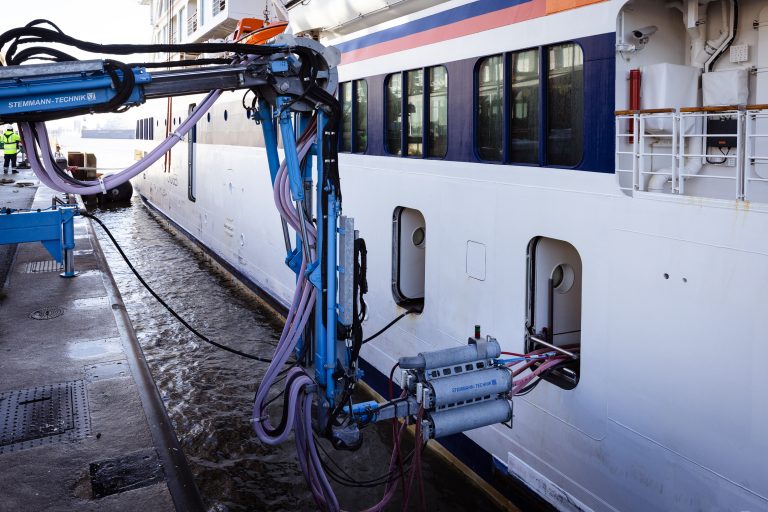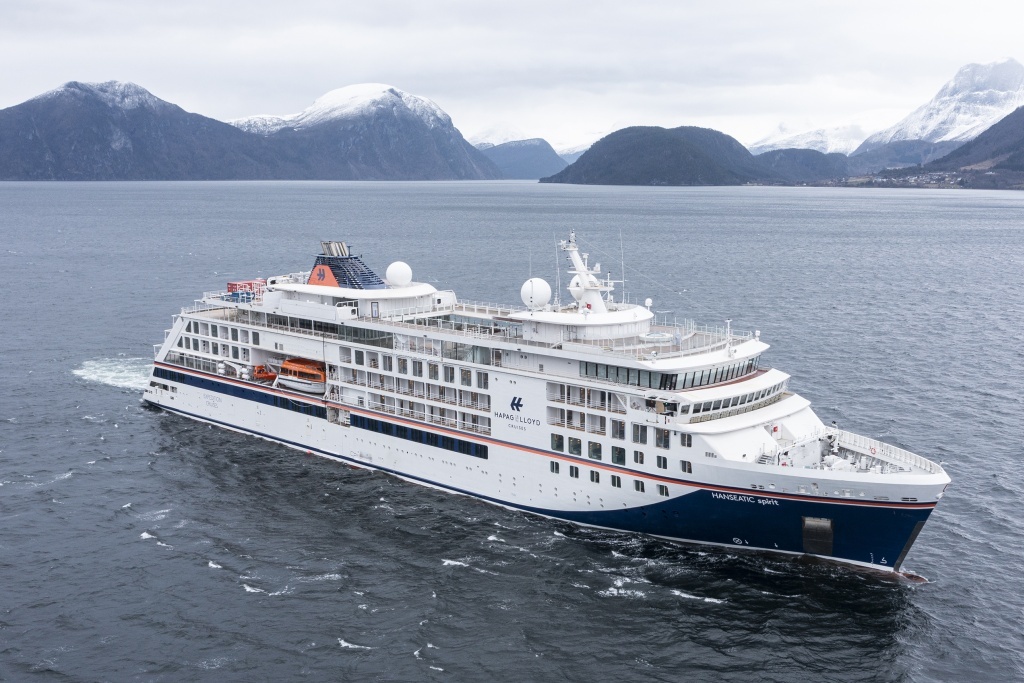Hapag-Lloyd on the Path to Sustainability
Hapag-Lloyd Cruises has taken another significant step toward sustainability with the Hanseatic Spirit, which has, for the first time in Amsterdam, refueled with 100% biofuel derived from waste residues, reducing CO2 emissions by at least 80%.
This event marks an additional commitment to the decarbonization of the fleet, accompanied by the successful first trial of shore power connection, tested upon its arrival at Hamburg Cruise Center Altona. Since 2020, ships in Hapag-Lloyd Cruises‘ new expedition class have been using marine diesel with a sulfur content of less than 0.1%, already significantly reducing emissions. In 2022, the sister ship of the Hanseatic Spirit, the Hanseatic Inspiration, successfully tested a blend of 30% biofuel and marine diesel, reducing CO2 emissions by up to 90%. Now, the Hanseatic Spirit is fully powered by second-generation ecological biofuel, produced from waste and residues.
HANSEATIC spirit bezieht Landstrom am Hamburg Cruise Center Altona, Hapag-Lloyd Cruises.
HANSEATIC spirit bezieht Landstrom am Hamburg Cruise Center Altona, Hapag-Lloyd Cruises.
The shore power connection test represents another decisive step in reducing emissions. Shore power is key to reducing port pollution, helping to minimize CO2 and other pollutant emissions. The Hanseatic Spirit joins other ships in the Hapag-Lloyd Cruises fleet, such as the Hanseatic Nature and EUROPA 2, that can already benefit from this technology. In the future, the Hanseatic Inspiration will also receive the necessary data to complete the transition, further expanding the use of shore power within the fleet.
Since 2015, Hapag-Lloyd has been preparing to connect its ships to the shore electricity grid, anticipating a trend that is now gaining global relevance. Today, fewer than 30 ports around the world are equipped with shore power infrastructure, located primarily in North America, China, and Europe. With these innovative advances, Hapag-Lloyd Cruises continues to lead the way in sustainability, charting a course for a greener, low-emission future for the global cruise industry.
Stay tuned for updates, news, and reviews of Hapag-Lloyd on Cruising Journal.



